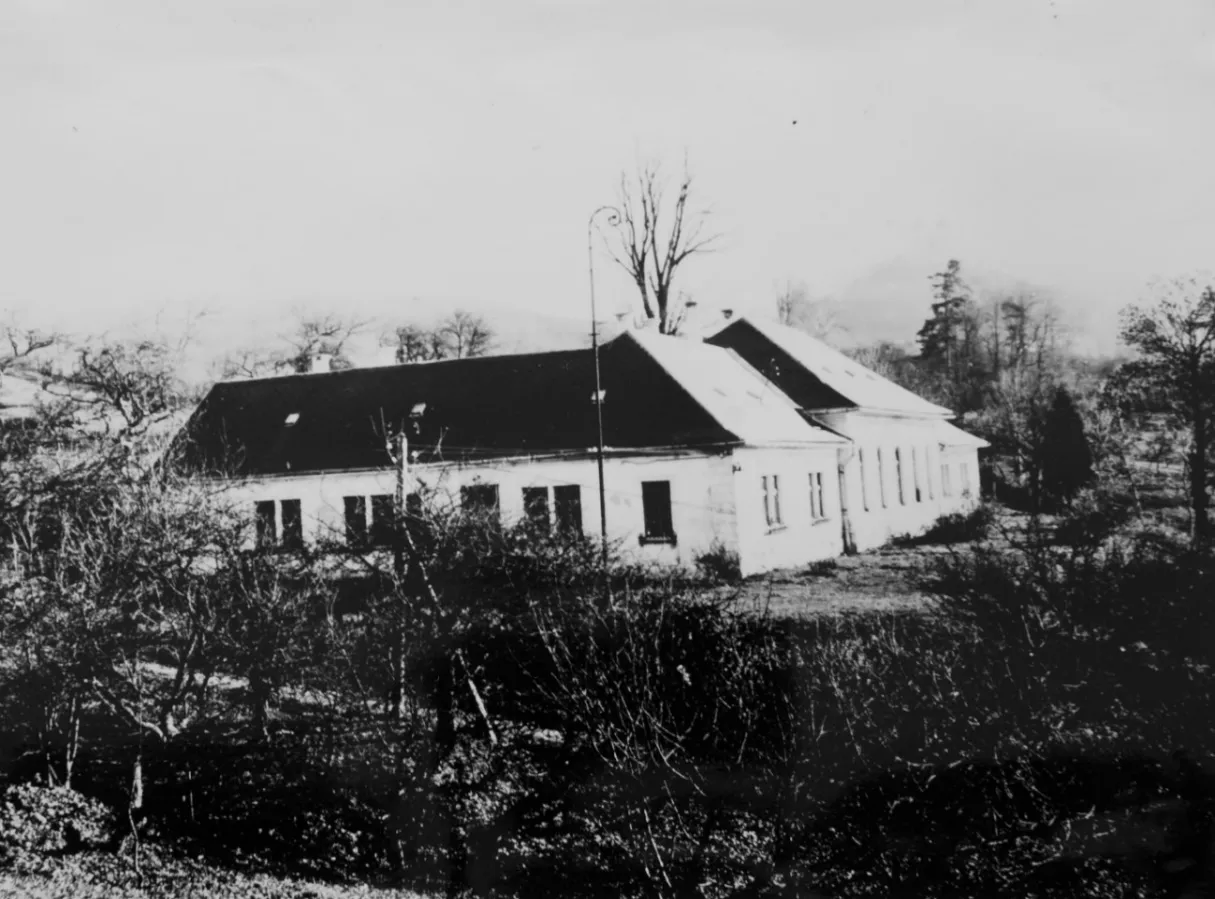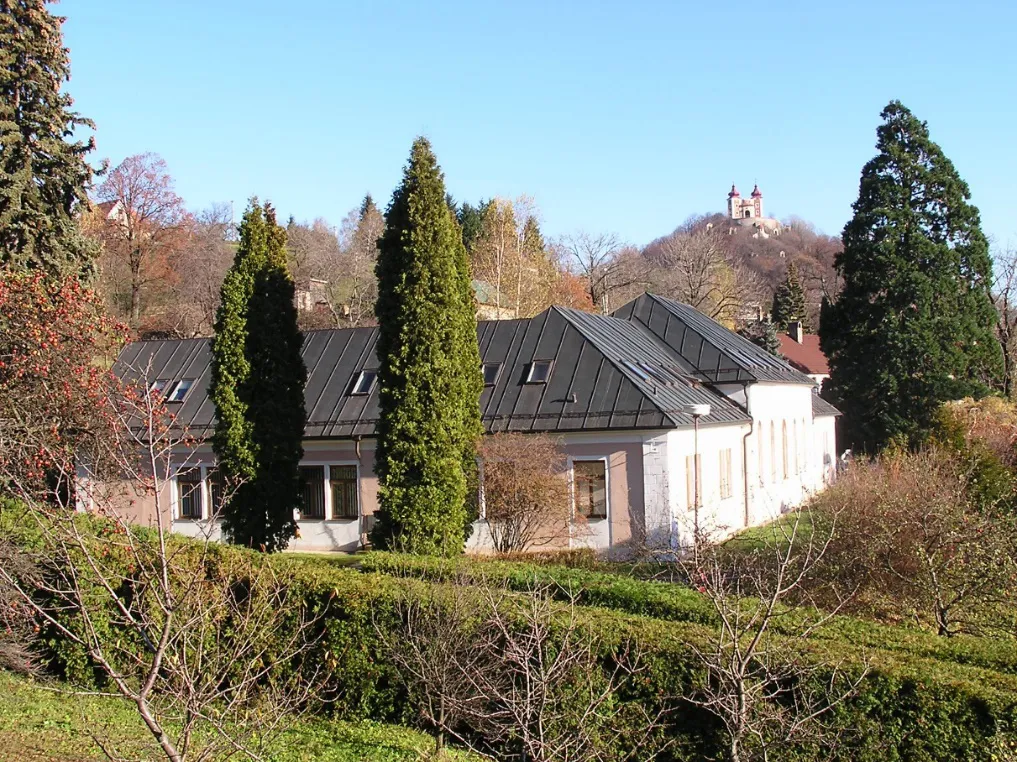Research station Banská Štiavnica
Research station Banská Štiavnica
- Home
- Technologies
- Research station Banská Štiavnica
Research station Banská Štiavnica
A part of research station on Banská Štiavnica is also involved into CoE LignoSIlva, focused on development of internet platform for identification and monitoring of forest and wood pests (WoodPests)
The history of the facility dates back to the late 19th century. It was established as an independent forestry institute. In December 1897, the Ministry of Agriculture approved the establishment of forestry research stations (by Decree No. 12650/I/2 897 on December 31, 1897). This was based on the original proposal by Eugen Vlkolovský – Vadás, which included the Central Research Station at the Academy in Banská Štiavnica and external research stations at four forestry schools in Hungary (in Liptovský Hrádok, Vadászerdő, Görgényszentimre, and Királyhalom). They commenced operations on January 1, 1898, according to the organisational regulations approved in the cited decree. The Central Research Station was directly under the Ministry of Agriculture, while the external research stations at the forestry schools were subordinated to the central station.
Significant importance was attributed to determining Hungary’s natural distribution of forest tree species. Research also focused on studying black locusts as a tree species important for forestry. The effort to engage in experiments proposed and guided by IUFRO aimed to clarify issues related to introducing tree species. Provenance research was established, and the Arboretum was established in 1900. In 1915, the research program included questions regarding the reconstruction and management of wind-damaged forests in the Tatra region, the potential for obtaining resin, forest protection, natural regeneration, and more.
The research station in Banská Štiavnica also actively participated in international scientific cooperation. By 1903, it became a member of IUFRO. The institute remained the central organisational component of the gradually emerging branches until 1952, when the facility in Banská Štiavnica became a branch of the Research Institute of Forestry in Zbraslav–Strnady (now Czech Republic). In 1968, the centre was relocated to Zvolen, while the facility in Banská Štiavnica remains a branch focused on forest protection. This status remains until the present day.


Currently, the main focus at the facility is on integrated forest protection, particularly issues related to harmful insects and fungal pathogens. The search is ongoing for effective methods utilising biological and biotechnological approaches to control populations of destructive insects and fungi. As an integrated part of the National Forestry Center (NFC), the facility conducts the majority of research targeting forest protection. The Banská Štiavnica research facility has long specialised in ecologically acceptable, biological, and biotechnical methods for protecting forests from insect and fungal pests. This work includes exploring the use of entomopathogenic fungi (such as Beauveria bassiana and Entomophaga maimaiga), parasitoids, microsporidia, and others. In 2010, the facility was honoured as a Center of Excellence for Biological Methods of Forest Protection in response to the developing research on biological methods of forest protection (a project funded by the EU).
Some research findings exhibit characteristics of “uniqueness” and “innovation.” These have the potential for operational use and are thus registered with the patent office. In this way, these ideas are prepared for commercial utilisation, benefiting the copyright holders. Among the most significant patents developed at the facility are „Repelak“ – repellent with an original formulation (circa 2000), Strains of microorganisms Trichoderma atroviride and Trichoderma harzianum, along with a plant protection agent containing them, Chemical Institute of the Slovak Academy of Sciences in Bratislava and NFC, 2008 and Carrier of biologically active organisms (known as Beauveria balls), NFC, 2024. A lower level of patent protection includes so-called Protected Designs, such as Pheromone traps LOS 1, LOS 2 (from 2014) or Pheromone traps for biological protection (2024).


Patented carrier of the fungus Entomophaga maimaiga for use against H. abietis and Equipment for semi-field insect breeding
The results of scientific research are regularly published in reputable scientific journals both domestically and internationally. Special attention is given to publishing an expert book for the professional community. Over the past 30 years, the staff has released many scientific papers and 15 such expert books.
The facility also has long-standing experience recording and monitoring the occurrence and spread of native and invasive pest species. Staff members were the first in Slovakia to record the following species: Dothistroma leptospira on pine (1996), Chalara fraxinea on ash (2004), Eutypella parasitic on maple (2004), Cryptostroma cortical on maple (2017), and Corythucha arcuate on oak (2017).
The number of staff members has not changed significantly over the last 30 years, ranging from 10 to 15. There is a predominance of scientific workers to technical staff at a ratio of about 80:20.
As part of the project implementation, the workplace in Banská Štiavnica primarily focuses on Deliverable D5.9 – WoodPests web platform, including mapping, identification, and advisory services. The main objectives are to build capacities for improved forest and wood pest advisory services, timber protection, risk management, and develop a comprehensive internet platform, including electronic identification and monitoring systems for forest and wood pests.
Build capacities for improved forest and wood pest advisory services.
A key objective is to build capacities for forest pest advisory services and to propose innovative biotechnological methods for managing pests and diseases in forest stands, logs, lumber, wood chips, and admixtures from recycling waste. The work is conducted in laboratories that have been recently modernised, mainly thanks to the SK ERDF-funded operational programme Research and Development under Grant No. ITMS: 26220120008. The laboratories have relevant pest-breeding equipment and a full spectrum of experimental tools. The total internal laboratory area is approximately 500 m². The available facilities include 6 x 700 l air conditioners, 4 x freezers, 5 x refrigerators, 1 x heated incubator, 4 x centrifuges, 2 x autoclaves, 4 rooms with controlled temperature and humidity, 12 x breeding boxes (each 2 x 2 x 2 m) for outdoor insect breeding with automatic watering, 1 x thermocycler, 1 x PCR box, 3 x laminar cabinets, 1 x Leica M205C stereomicroscope + DFC500 camera system, 1 x high-tech binocular microscope, 4 x medium-level stereo microscopes, all equipped with digital cameras.
In 2024, we provided advisory services throughout Slovakia, with the majority focused on managing spruce stands affected by bark beetles (Ips typographus). We prepared multiple assessments and recommendations for private land, forest owners, and public authorities. Additionally, we organised a professional working meeting with over 200 participants to discuss methods and strategies for reducing forest damage.
Expected outputs include:
- Innovative biological and biotechnological methods for pest and disease management in forestry.
- Systems for wood and timber management and storage to prevent or control damage caused by pests and diseases.
- Improved advisory services in forest and wood protection and risk management.
- Printed tools for early pest identification.
Internet platform for identification and monitoring of forest and wood pests (WoodPests)
The system preparation we have built on existing pest occurrence databases. In 2024, we proposed designing and functionalities for a unique integrated system and databases for forest and wood pest identification and distribution systems. The system has been programmed and is currently in a test version. Texts and species lists are being completed. The final system will be hosted at www.woodpests.com (already registered). The system will be directly linked with the existing ForestPest system and will create a comprehensive system for the identification, monitoring, and spatial and temporal mapping of target species. The platform will serve as an online early warning system for domestic and invasive harmful or potentially harmful species. The system will include a digital identification key, a map of pests’ spatial distribution, and a website with information about the most significant pests causing damage to wood.
Expected outputs include:
- A specific forest and wood expert system for early warning and collecting and disseminating appropriate information about forest and wood damage.
This demonstration case aims to create a national structure that could also be used internationally, facilitating pest management and wood protection at the European level in the future. This structure will allow users (mainly forest enterprises and wood processing companies) to identify and monitor the spatial distribution of pests causing damage to forests and wood. This information will help them apply more effective, species-specific pest control, wood processing, and wood management systems.
